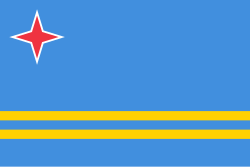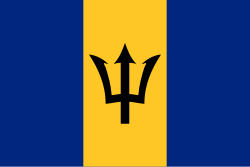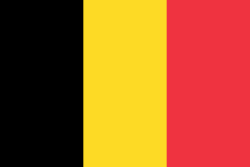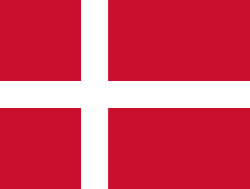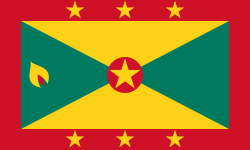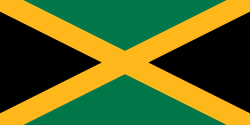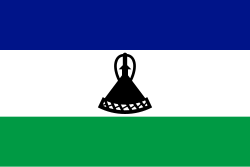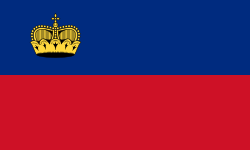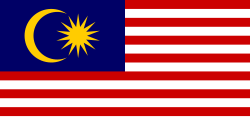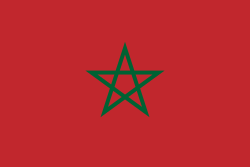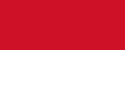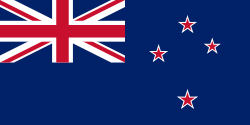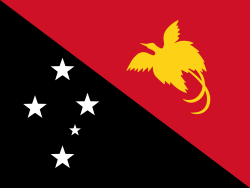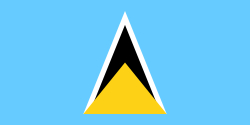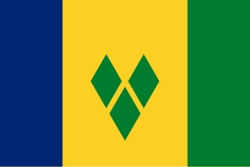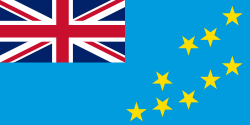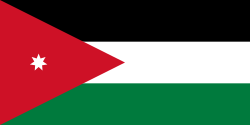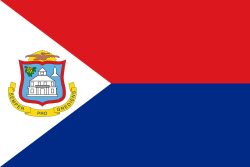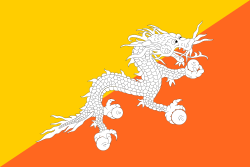Konstitutionell monarki
| Den här artikeln behöver fler eller bättre källhänvisningar för att kunna verifieras. (2022-09) Åtgärda genom att lägga till pålitliga källor (gärna som fotnoter). Uppgifter utan källhänvisning kan ifrågasättas och tas bort utan att det behöver diskuteras på diskussionssidan. |
En konstitutionell monarki är en statsform med en monark som statschef (monarki), där denne dock har mycket begränsade befogenheter, tydligt reglerade i en grundlag eller genom praxis, jämfört med vad som är fallet i en absolut monarki.
I de flesta fall har de konstitutionella monarkierna utvecklats till parlamentariska monarkier, vilket innebär att monarkens befogenheter begränsas av att regeringen utses av riksdagen och utövar den större och avgörande delen av regeringsmakten i överensstämmelse med folksuveränitetsprincipen. Det har vanligen skett genom att utvecklingen gått ditåt i praktiken, genom "praxis". Ibland har utvecklingen också slutgiltigt kodifierats i konstitutionen, det vill säga skrivits in där. Så är fallet i bland annat Sverige, Danmark och Spanien. Vanligen har parlamentets starka maktställning till exempel över statsbudgeten och genom kontrollmakten över regeringen eller andra historiska orsaker, bidragit till parlamentarismen som i Storbritannien och Norge bland annat. Parlamentarism infördes i praktiken i Norge 1884 genom att Stortinget lyckades fälla en regering i riksrätt.
Lista över nuvarande konstitutionella monarkier
2017 var följande länder konstitutionella monarkier:
 Antigua och Barbuda[a]
Antigua och Barbuda[a] Aruba[b]
Aruba[b] Australien [a]
Australien [a] Bahamas[a]
Bahamas[a] Bahrain[1]
Bahrain[1] Barbados[a]
Barbados[a] Belgien
Belgien Belize[a]
Belize[a] Bhutan[2]
Bhutan[2] Curaçao[b]
Curaçao[b] Danmark[c]
Danmark[c] Grenada[a]
Grenada[a] Jamaica[a]
Jamaica[a] Japan
Japan Jordanien[3]
Jordanien[3] Lesotho[4]
Lesotho[4] Liechtenstein[5]
Liechtenstein[5] Luxemburg
Luxemburg Kambodja[6]
Kambodja[6] Kanada[a]
Kanada[a] Kuwait[7]
Kuwait[7] Malaysia[8]
Malaysia[8] Marocko[9]
Marocko[9] Monaco[10]
Monaco[10] Nederländerna[b]
Nederländerna[b] Norge
Norge Nya Zeeland[a]
Nya Zeeland[a] Papua Nya Guinea[a]
Papua Nya Guinea[a] Saint Kitts och Nevis[a]
Saint Kitts och Nevis[a] Saint Lucia[a]
Saint Lucia[a] Saint Vincent och Grenadinerna[a]
Saint Vincent och Grenadinerna[a] Salomonöarna[a]
Salomonöarna[a] Sint Maarten[b]
Sint Maarten[b] Spanien[11]
Spanien[11] Storbritannien[d]
Storbritannien[d] Sverige
Sverige Thailand[e][12]
Thailand[e][12] Tonga[13]
Tonga[13] Tuvalu[a]
Tuvalu[a]
Källor
- ^ ”Bahrain”. The World Factbook. Central Intelligence Agency. 19 juni 2017. Arkiverad från originalet den 29 december 2010. https://web.archive.org/web/20101229005328/https://www.cia.gov/library/publications/the-world-factbook/geos/ba.html. Läst 5 juli 2017.
- ^ ”Bhutan”. The World Factbook. Central Intelligence Agency. 28 juni 2017. Arkiverad från originalet den 28 december 2010. https://web.archive.org/web/20101228202246/https://www.cia.gov/library/publications/the-world-factbook/geos/bt.html. Läst 5 juli 2017.
- ^ ”Jordan”. The World Factbook. Central Intelligence Agency. 19 juni 2017. Arkiverad från originalet den 24 december 2018. https://web.archive.org/web/20181224211148/https://www.cia.gov/library/publications/the-world-factbook/geos/jo.html. Läst 5 juli 2017.
- ^ ”Lesotho”. The World Factbook. Central Intelligence Agency. 19 juni 2017. Arkiverad från originalet den 12 juni 2007. https://web.archive.org/web/20070612204352/https://www.cia.gov/library/publications/the-world-factbook/geos/lt.html. Läst 5 juli 2017.
- ^ ”Liechtenstein”. The World Factbook. Central Intelligence Agency. 26 juni 2017. Arkiverad från originalet den 1 maj 2020. https://web.archive.org/web/20200501044245/https://www.cia.gov/library/publications/the-world-factbook/geos/ls.html. Läst 5 juli 2017.
- ^ ”Cambodia”. The World Factbook. Central Intelligence Agency. 15 juni 2017. Arkiverad från originalet den 29 december 2010. https://web.archive.org/web/20101229001224/https://www.cia.gov/library/publications/the-world-factbook/geos/cb.html. Läst 5 juli 2017.
- ^ ”Kuwait”. The World Factbook. Central Intelligence Agency. 21 juni 2017. Arkiverad från originalet den 21 maj 2016. https://web.archive.org/web/20160521031251/https://www.cia.gov/library/publications/the-world-factbook/geos/ku.html. Läst 5 juli 2017.
- ^ ”Malaysia”. The World Factbook. Central Intelligence Agency. 26 juni 2017. Arkiverad från originalet den 28 december 2010. https://web.archive.org/web/20101228233159/https://www.cia.gov/library/publications/the-world-factbook/geos/my.html. Läst 5 juli 2017.
- ^ ”Morocco”. The World Factbook. Central Intelligence Agency. 26 juni 2017. Arkiverad från originalet den 26 december 2018. https://web.archive.org/web/20181226055346/https://www.cia.gov/library/publications/the-world-factbook/geos/mo.html%20. Läst 5 juli 2017.
- ^ ”Monaco”. The World Factbook. Central Intelligence Agency. 13 juni 2017. Arkiverad från originalet den 1 maj 2020. https://web.archive.org/web/20200501044234/https://www.cia.gov/library/publications/the-world-factbook/geos/mn.html. Läst 5 juli 2017.
- ^ ”Spain”. The World Factbook. Central Intelligence Agency. 21 juni 2017. Arkiverad från originalet den 19 maj 2009. https://www.webcitation.org/5gsZhjpvP?url=https://www.cia.gov/library/publications/the-world-factbook/geos/sp.html. Läst 5 juli 2017.
- ^ ”Thailand”. The World Factbook. Central Intelligence Agency. 27 juni 2017. Arkiverad från originalet den 29 december 2010. https://web.archive.org/web/20101229000203/https://www.cia.gov/library/publications/the-world-factbook/geos/th.html. Läst 5 juli 2017.
- ^ ”Tonga”. The World Factbook. Central Intelligence Agency. 27 juni 2017. Arkiverad från originalet den 11 maj 2019. https://web.archive.org/web/20190511141903/https://www.cia.gov/library/publications/the-world-factbook/geos/tn.html. Läst 5 juli 2017.
Anmärkningar
- ^ [a b c d e f g h i j k l m n o] Samväldesrike där samma person som även är Storbritanniens monark är statschef i landet.
- ^ [a b c d]
 Konungariket Nederländerna är en suverän stat som består av fyra delar med självstyre. I samtliga delar är Nederländernas monark statschef.
Konungariket Nederländerna är en suverän stat som består av fyra delar med självstyre. I samtliga delar är Nederländernas monark statschef. - ^ I union med Danmark finns de två självstyrande länderna
 Färöarna och
Färöarna och  Grönland. Danmarks monark är statschef i båda dessa autonoma länder.
Grönland. Danmarks monark är statschef i båda dessa autonoma länder. - ^ I union med Storbritannien finns tre självstyrande kronbesittningar :
 Guernsey,
Guernsey,  Isle of Man och
Isle of Man och  Jersey. På Guernsey och Jersey har Storbritanniens monark titeln kung eller drottning medan på Isle of Man används titeln Lord of Mann oavsett kön. Storbritannien har även fjorton utomeuropeiska territorier med varierande grader avs jälvstyre där monarken är statschef.
Jersey. På Guernsey och Jersey har Storbritanniens monark titeln kung eller drottning medan på Isle of Man används titeln Lord of Mann oavsett kön. Storbritannien har även fjorton utomeuropeiska territorier med varierande grader avs jälvstyre där monarken är statschef. - ^ Thailand styrs sedan maj 2014 av en militärjunta.
Se även
Media som används på denna webbplats
Författare/Upphovsman: Fry1989 eh?, Licens: CC0
Flag of the Isle of Mann. This version has the triskelion centered as a whole rather than based upon the imaginary circle created by the prongs of each leg.
Författare/Upphovsman: Tkgd2007, Licens: CC BY-SA 3.0
A new incarnation of Image:Question_book-3.svg, which was uploaded by user AzaToth. This file is available on the English version of Wikipedia under the filename en:Image:Question book-new.svg
The flag of Aruba
The civil ensign and flag of Belgium. It is identical to Image:Flag of Belgium.svg except that it has a 2:3 ratio, instead of 13:15.
Flag of Jamaica. “The sunshine, the land is green, and the people are strong and bold” is the symbolism of the colours of the flag. GOLD represents the natural wealth and beauty of sunlight; GREEN represents hope and agricultural resources; BLACK represents the strength and creativity of the people. The original symbolism, however, was "Hardships there are, but the land is green, and the sun shineth", where BLACK represented the hardships being faced.
Flag of Liechtenstein
Kanadas flagga, införd 1965; denna version med Pantone‐nyanser. Nuvarande utformning ersatte den tidigare kanadensiska Red Ensign.
Författare/Upphovsman: Gutten på Hemsen, Licens: CC0
Flag of Norway with colors from the previous version on Commons. This file is used to discuss the colors of the Norwegian flag.
The national flag of Kingdom of Thailand; there are total of 3 colours:
- Red represents the blood spilt to protect Thailand’s independence and often more simply described as representing the nation.
- White represents the religion of Buddhism, the predominant religion of the nation
- Blue represents the monarchy of the nation, which is recognised as the centre of Thai hearts.
The flag of Curaçao is a blue field with a horizontal yellow stripe slightly below the midline and two white, five-pointed stars in the canton. The geometry and colors are according to the description at Flags of the World.








